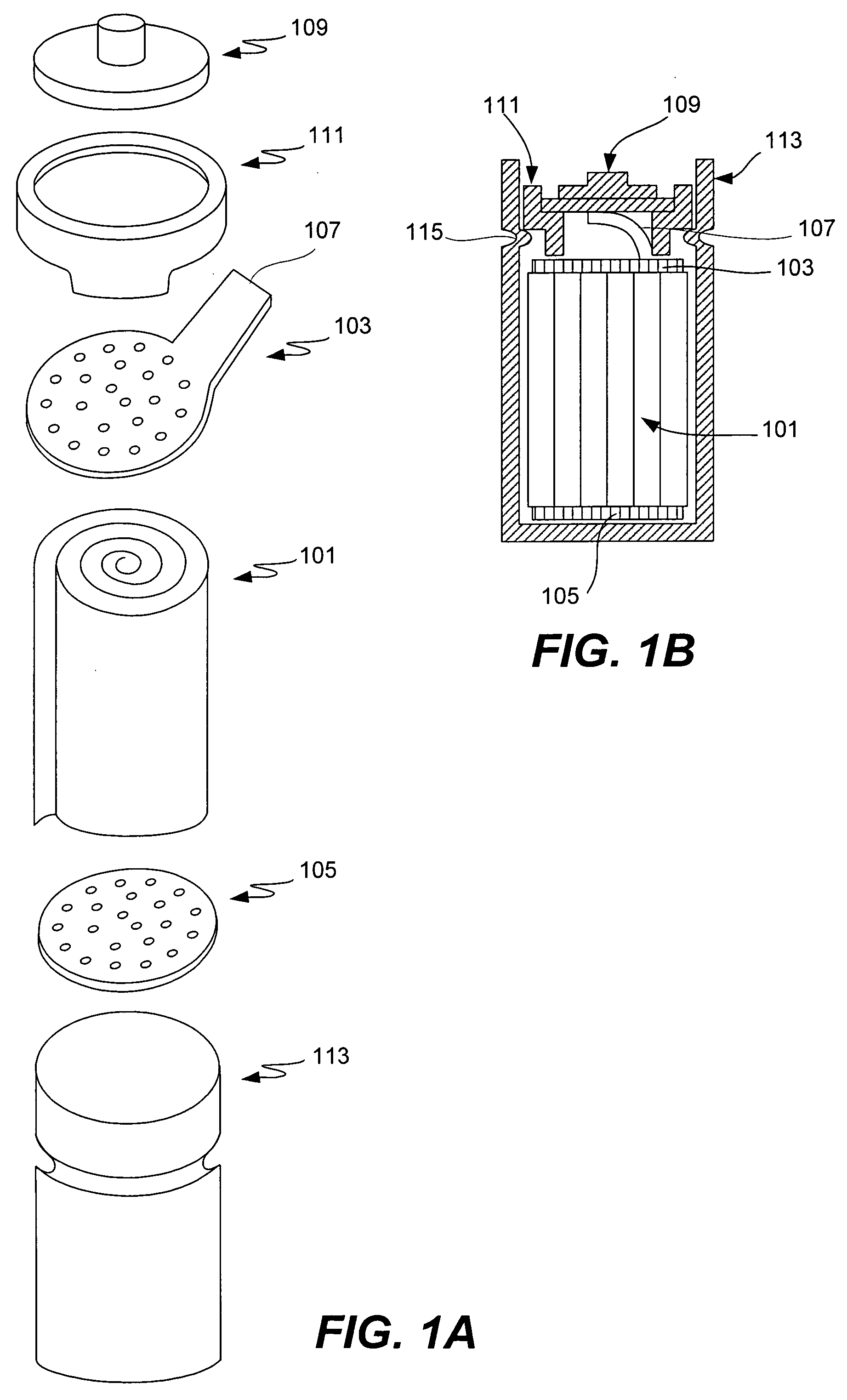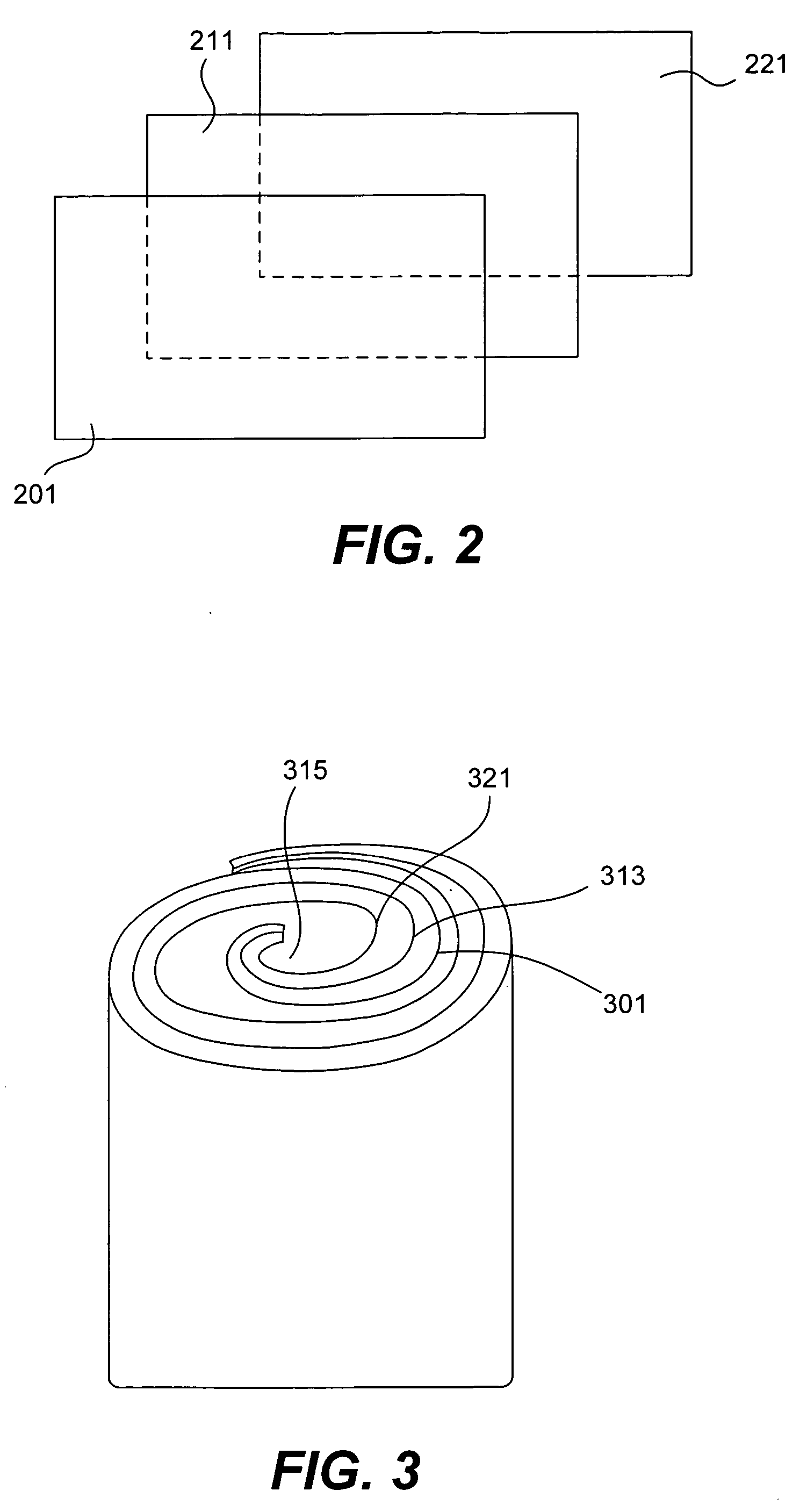Nickel zinc battery design
a rechargeable battery and zinc-zinc technology, applied in the field of rechargeable battery arts, can solve the problems of nickel plated steel not being compatible with the negative zinc electrode, the technology of nickel zinc batteries has not been widely deployed in part, and the negative zinc electrode is not compatible with nickel plated steel. , to achieve the effect of low impedance, low impedance, and limited build-up of hydrogen gas in the cell
- Summary
- Abstract
- Description
- Claims
- Application Information
AI Technical Summary
Benefits of technology
Problems solved by technology
Method used
Image
Examples
Embodiment Construction
[0037] The present invention relates to nickel zinc battery designs. As indicated above, nickel zinc battery design presents several challenges that are not addressed by conventional rechargeable battery design. These include zinc dendrite formation and redistribution of the zinc electrode (“shape change”), the use of copper conductive paths, and the propensity for hydrogen evolution at the zinc electrode.
[0038] Embodiments of this aspect of the invention are discussed below with reference to FIGS. 1-10. However, those skilled in the art will readily appreciate that the detailed description given herein with respect to these figures is for explanatory purposes as the invention extends beyond these limited embodiments.
[0039]FIGS. 1a and 1b are graphical representations of the main components of a cylindrical power cell according to one embodiment of the present invention, with FIG. 1a showing an exploded view of the cell. Electrode and electrolyte layers are in cylindrical assembly...
PUM
 Login to View More
Login to View More Abstract
Description
Claims
Application Information
 Login to View More
Login to View More - R&D
- Intellectual Property
- Life Sciences
- Materials
- Tech Scout
- Unparalleled Data Quality
- Higher Quality Content
- 60% Fewer Hallucinations
Browse by: Latest US Patents, China's latest patents, Technical Efficacy Thesaurus, Application Domain, Technology Topic, Popular Technical Reports.
© 2025 PatSnap. All rights reserved.Legal|Privacy policy|Modern Slavery Act Transparency Statement|Sitemap|About US| Contact US: help@patsnap.com



